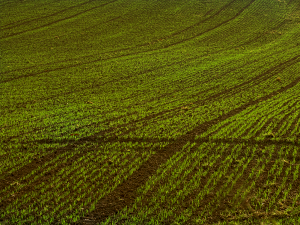 Northwest Region Crop Report Prepared by: Manitoba Agriculture
Northwest Region Crop Report Prepared by: Manitoba Agriculture
June 24, 2019 |
Northwest Region
There were good growing conditions in the Northwest region last week with daytime temperatures over 25°C and welcome rain showers through most of the region. Rainfall amounts varied with Swan River, Roblin, and The Pas receiving 10 to 17 mm; Grandview/Pipe Lake area received the most rain at 25mm. Unfortunately, the driest parts of the region, around Dauphin/Ste. Rose, received the least amount at only 10 mm. These showers have helped crops to advance after a long delay due to dry conditions. Soil moisture conditions around Dauphin are short; Swan River area is 40% adequate, 50% short and 10% very short; soils in The Pas and Roblin are 100% adequate.
There was noticeable growth in the canola this week with 75% of the crop in the rosette stage while the later seeded crops are still in the cotyledon stage. Spring cereals are moving into stem elongation stage, while winter wheat is at flag leaf stage and fall rye heading out. Field peas in the region have begun flowering. Weeds are actively growing and herbicide applications continue as crops develop and weeds become an issue.
Diamondback moth larvae have been observed in canola around Swan River and producers are encouraged to scout their fields. Bertha Armyworm moths are showing up in traps throughout the region. While still at “low risk”, numbers are nearing the “uncertain” range in the Ste. Rose area. Generally, crops in the Northwest region are rated as good, however areas with issues have become more noticeable in regards to germination, emergence, frost, insects, etc. as the crop advances.
Continued dry conditions for the Ste. Rose and Westlake areas have depleted pastures reserves and dugouts. Some dugouts have been reported to have dried up. Hay crops are poor with limited yields expected and is first cut being delayed. Some cattle have been sold as limited pasture growth will not support summer feed requirements. Other areas of the Northwest have had some spotty showers. Pastures are holding out in those areas but do require more moisture as well. Silage corn crops are improving but require additional moisture as well.
